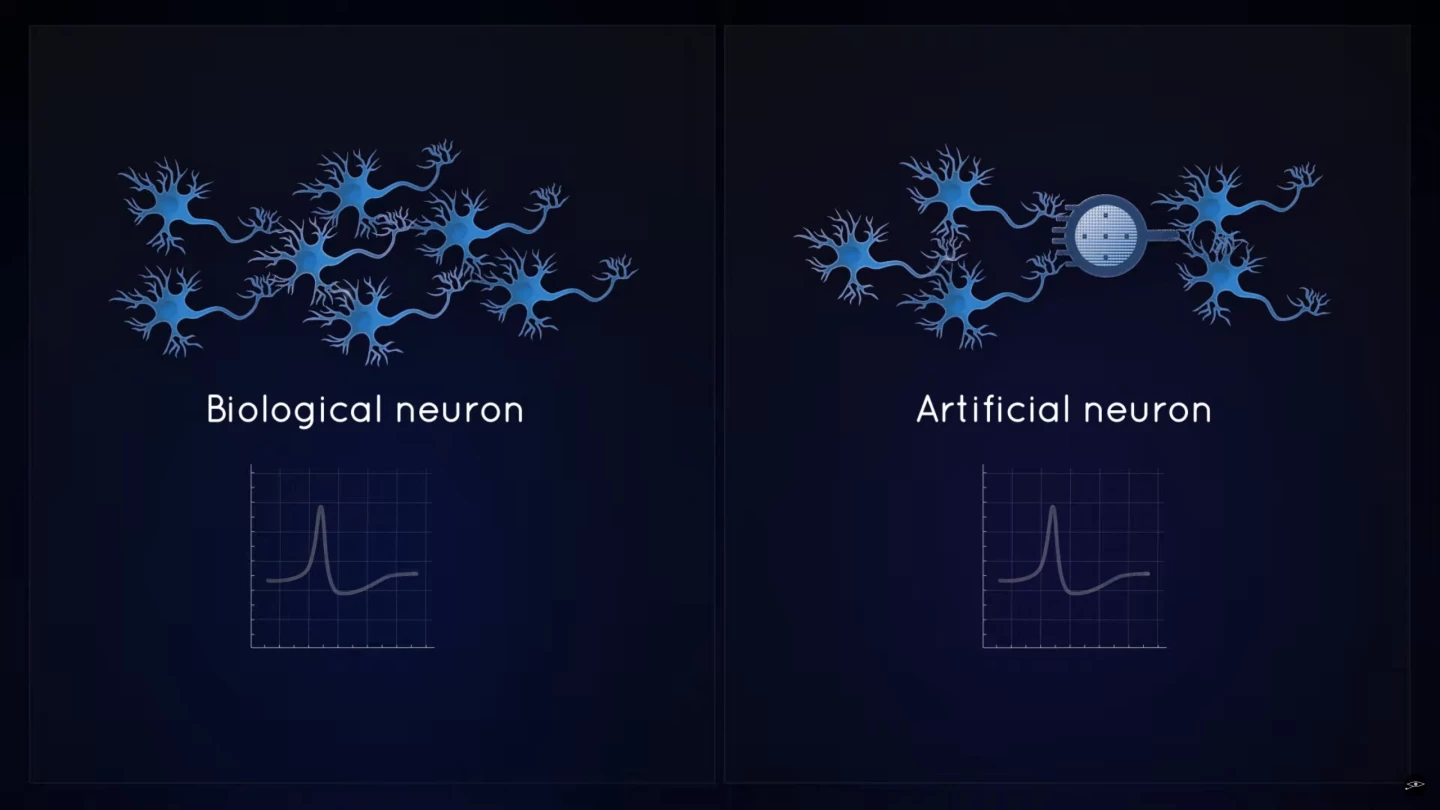Arkenlight and Axorus have teamed up to prototype the first artificial neuron powered by a diamond betavoltaic battery made from nuclear waste. The goal is to develop medical-grade implants with energy sources that will last decades without charging.
We've covered Arkenlight's diamond-based betavoltaic battery technology in detail before. In brief, this company was formed by researchers at the University of Bristol who developed a means for taking bits of radioactive waste from nuclear power stations – specifically, carbon-14 and tritium from reactor parts that have been exposed to fuel rod radiation – and converting them into diamonds that can harvest the high-energy electrons, or beta particles, that it emits, and turn them into usable electricity.
These beta-voltaic batteries will generate power for an extremely long time – some can be designed to last for decades, others for thousands of years, depending on the half-life of the specific isotope they use. And despite the fact that they're made from radioactive nuclear waste, Arkenlight CEO Morgan Boardman tells us via email that they're very safe for use near, or even inside the human body.
"Externally," writes Boardman, "beta radiation of this kind doesn't penetrate human skin. Internally, there is no measurable surface emission of activity, so the the risk is minimal. The extreme hardness of the diamond structure makes it almost impossible to break, and even if it fractured the risk is still low - though this requires destructive testing to demonstrate. One must consider a force strong enough to damage a diamond – at that moment, a very low dose leak on a broken edge of the power cell would likely be the least of a patient's worries!"

It's important to note, though, that we're talking about tiny amounts of power here, and that other companies promising to power consumer devices and electric cars with nuclear diamond batteries are yet to demonstrate how they'll do so without having batteries bigger and heavier than the devices themselves.
Lately, Arkenlight has been working with French company Axorus, to explore the possibility of using betavoltaic microbatteries to power the artificial neurons Axorus has been developing.
These artificial neurons are designed to slot into a patient's nervous system and perform a variety of functions, based around their ability to communicate with biological neurons, "listening" to signals sent by other neurons and other systems, and sending signals of their own where required. "It is a CMOS circuit," reads the company's website, "up to 1,000 times more energy-efficient and up to 10x smaller than a biological neuron. Its very high sensitivity makes it ideal for medical implants."

There's all sorts of ways Axorus hopes to use these kinds of devices. The company is currently developing an artificial retina, which pairs a number of artificial neurons with photodiodes, creating a matrix of "pixels" that can read incoming light and send an electrical signal to the brain through the optic nerve. Designed for patients experiencing age-related macular degeneration, it aims to give people back the central part of their vision, albeit initially only in black and white.
These artificial retinas will be powered by the ambient light itself, but Axorus is looking for solutions to power them at night, and the company has a range of other applications in mind for its artificial neurons in the brain, the endocrine system, the gut and the urinary system where they can potentially treat all kinds of disorders – but no light will be available to power them.
A tiny, safe betavoltaic battery that lasts for decades could be perfect for these devices, so Axorus and Arkenlight have partnered up to build a proof of concept: the first artificial neuron powered by a tritium radiovoltaic micro-power generator. Here it is.

The bright spot up top is the neuron itself, and the chunky black box at the bottom houses the beta-battery. If that looks a tad large to fit inside your eyeball, don't worry; Arkenlight's target size for this tritium battery is a 4x4 mm (0.16 x 0.16 inches) square with a thickness less than 50 microns. While final output and expected lifespan are still yet to be nailed down, the company says it expects these things to generate microwatts of power for decades.
There's a way to go yet. "Even though we are producing diamonds now," says Boardman, "the path to a minimum viable product requires multiple iterations in refining the recipe and process to ensure the highest power density possible. Along this route we need to conduct a great deal of testing to define and ensure standards for consistent production and safety. These are not trivial tasks and require a lot of time and effort. We are still several years away from having a commercially available product, though we are working with early customers (like Axorus) in aligning our effort with their needs. These types of early research collaborations are typical and highly supportive in that they foster the product development and typically end in a commercial relationship."
Still, the company remains hopeful that it can get something commercialized by 2024, and if it can demonstrate that these batteries are safe and reliable inside the human body, and deliver a useful amount of power in a tiny package, they may find a range of other medical applications to plug into down the track. Fascinating stuff. Check out a video on the Axorus artificial retina and neuron technology below.
Sources: Arkenlight, Axorus









